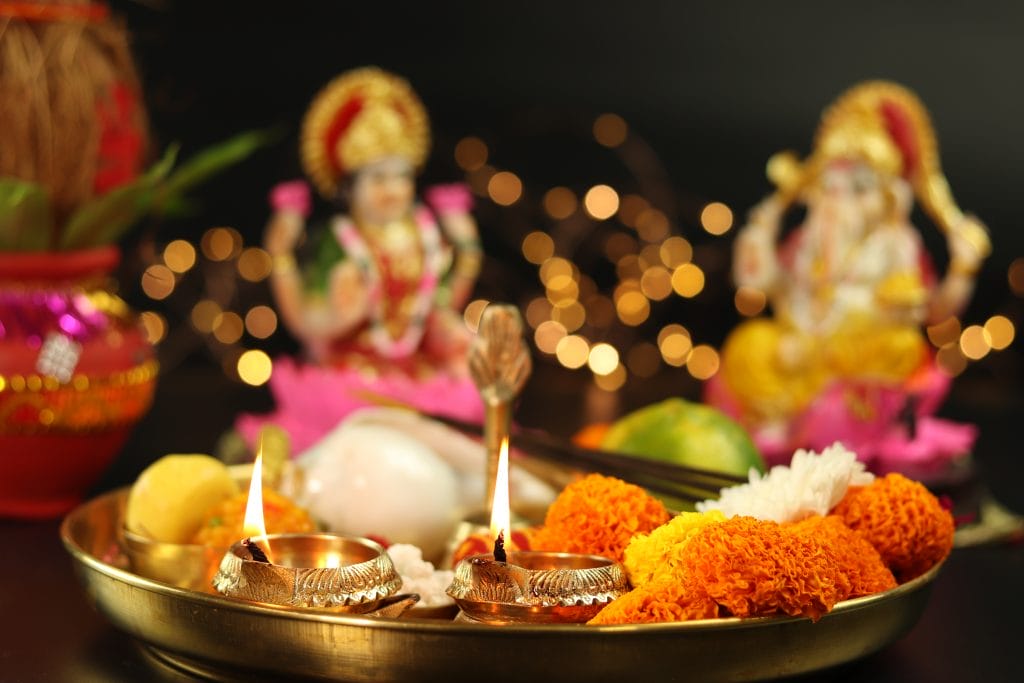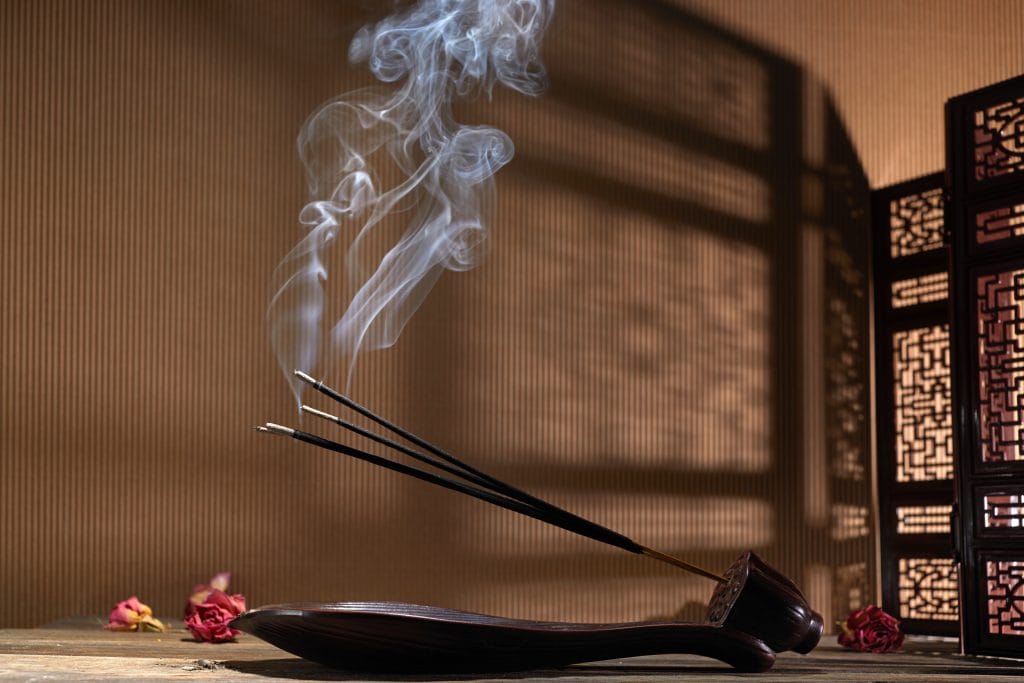Design a quiet space to connect with the divine
By Shaan Bajaj
In today’s world, as apartment sizes get smaller and lives get busier, it is important to take a moment to reflect and create a space that invites you to turn down the volume on our buzzing lives. For a majority of Indian households, a space like that exists in a dedicated prayer or puja area. This mandir is considered a sacred space to conduct daily prayers or connect to your spiritual side.
Growing up, you may remember waking up to the calming smell of incense or the sound of the prayer bell, and for many of us, having a place to pray is an integral part of our homes. All those elements work together to create a peaceful and spiritual space. If you have just
moved into a new place or are redesigning your home, and have no clue where to begin when designing a home mandir, here are some tips to get you started.
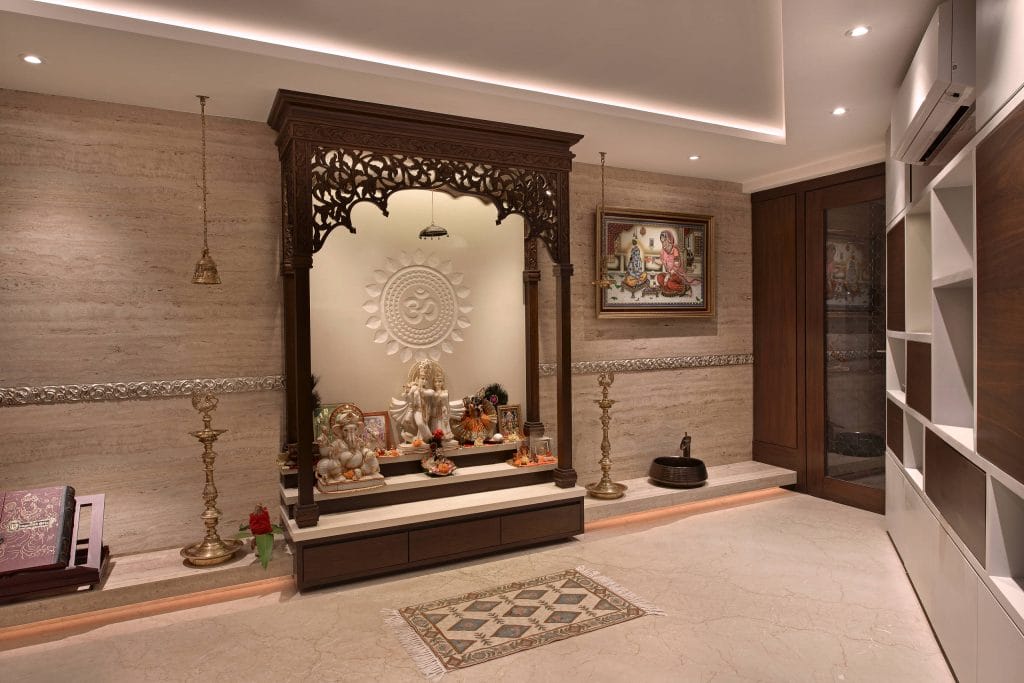
Location
In an apartment, the ideal place for worship would be a corner in your living room. As it is a sacred space, it is best to place your prayer area away from the kitchen, bedroom or toilet. Specifically, a Lord Krishna idol should never be placed in a bathroom or bedroom.
If you only have a small space to work with, such as a studio apartment, a wall divider could be an easy solution for you, and if you don’t even have room for that, consider a small area on a shelf or a small alcove mounted on the wall. Ideally, you are able to feel peace and connect to a higher energy whenever you take a moment to pray, away from any distractions. A pyramid-shaped structure would also be ideal for small spaces, as it takes up less room, and is also known to attract positive energy.
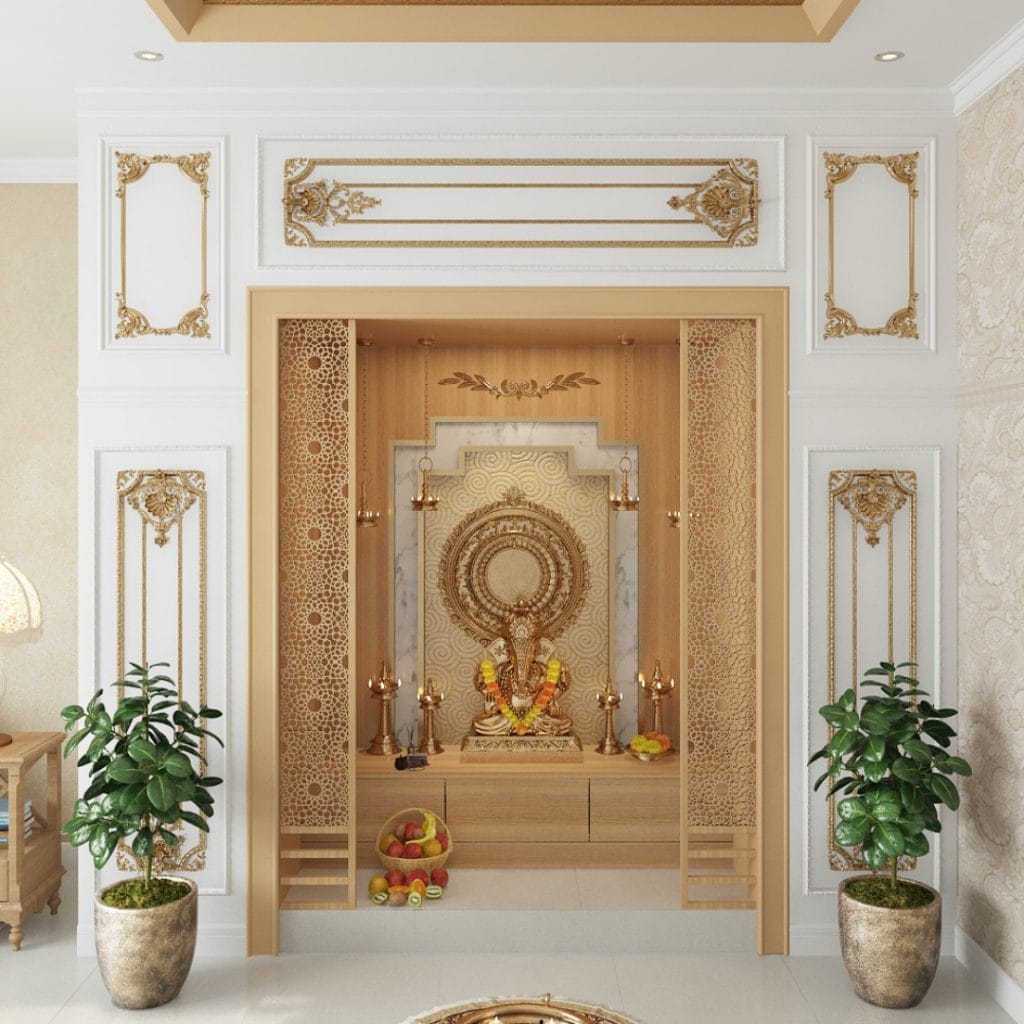
Design and Direction
Designing your home mandir correctly will allow energy to follow into your space, charging your mind, body and soul whenever you meditate. According to Vaastu Shastra, the ancient Indian science of architecture, there are a few important considerations to take into account when designing your prayer area. The science behind these practices is designed to promote positivity and calmness, all the things you want when you’re sitting down to pray.
Direction and placement is a crucial feature in Vaastu. Your place of worship should be in the North, East, or Northeast of your home. The Northeast is meant to bring in the energy of wealth, health, success and wisdom. According to Vaastu, be wary of placing your prayer area in the South, as it will block out divine energy. Your home mandir space should also be well-lit and ventilated, ideally with doors or windows in the North or East walls.
To show your respect to the divine, idols should be on a raised platform or pedestal, they should never face each other, and they should not be placed too close to the wall. Vaastu also has certain rules regarding the placement and direction of your chosen idols. For example, Lord Hanuman must always face South, while Lord Brahma should be kept East, but facing West. Lord Ganesh should be placed on the left of the goddess Lakshmi, who in turn should be to the left of the goddess Saraswati. Depending on the idols you choose to place in your mandir, make sure you do your research on their proper Vaastu placement, and the direction they should face, for the most auspicious outcome.
According to Dr. Smita Narang, a professional Vaastu expert, “energies can be balanced to enhance peace, prosperity and success. If a house is made according to these principles, the [occupants] enjoy all the happiness in life. If it is against Vaastu principles, it will be a place for all sorts of problems, worries, and no peace.”
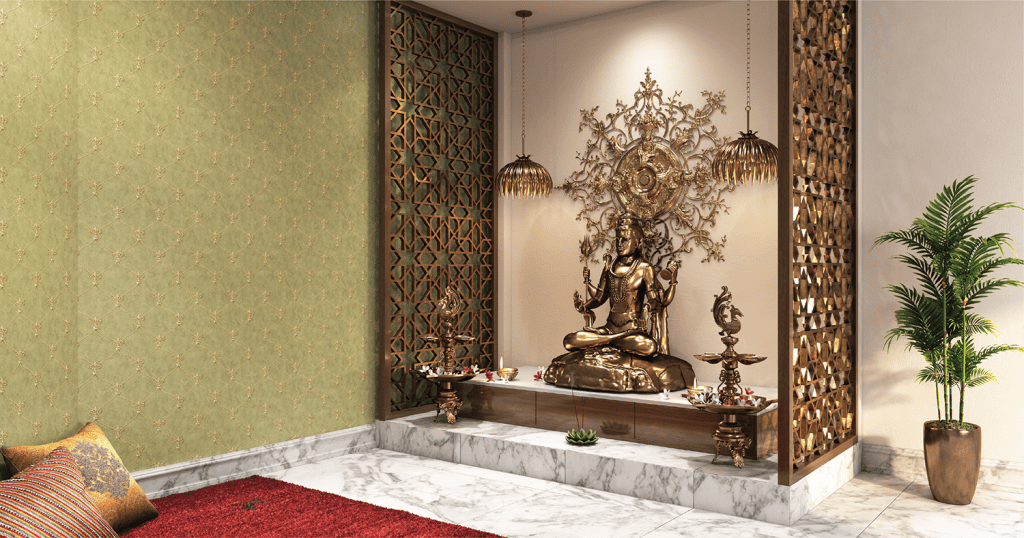
Materials
For the construction of a puja room, or simply for the structure upon which your idols are placed, it is recommended that you use natural materials. Stone and granite are classics and are easy to maintain, especially if you’re constructing an entire room dedicated to worship or prayer. For those who want to invest a little more, marble is considered one of the best materials for your home temple, especially Indian Makrana marble, if you can get your hands on it.
Wood, especially rosewood, is another recommended material for your home temple, and as an added benefit, you can have it crafted into beautiful and intricate designs for your altar or raised platform. On the other hand, we recommend that you avoid synthetic materials like glass or acrylic.
Colours
According to colour theory, every colour can communicate a different emotion or message. Kate Smith, an international colour expert and consultant, says that “colour influences perceptions, touches emotions, and sways decisions. We all respond to colour…[it] means more to us than mere wavelengths of light.”
Therefore, the colour you choose for your place of prayer should communicate the emotions you would like to feel when praying. For example, white symbolises purity, peace and quietness, while beige symbolises tranquility, comfort and simplicity. Light yellow, on the other hand, symbolises warmth, joy and freshness, and is also the colour of the goddess Lakshmi. You can also opt for certain pastel colours, but according to Vaastu, black should never be used in a temple area or place of worship.
Scents, textures, and stimulating the senses
After you have the basics down, you can add other elements to elevate your place of worship. Simple things like scents can have a significant impact, especially in small spaces. Aromatherapy is the use of scents to promote well-being and reduce anxiety, and adding fresh flowers, home scents, and scented candles could be the final touch you need for a tranquil space of worship. Some scents to consider include rosemary, which is correlated with contentment and fulfilment, while lavender is associated with calmness, and can help you relieve stress. If you’re looking for something a little different, a ‘sea breeze’ scent can help transport you while you pray.
Consider adding soft textures like a carpet or pillow to sit on to help worshippers feel comfortable, and to designate the space. For small areas, consider a yoga mat that can be easily laid out when needed.
You could engage your sense of sound by adding a small water feature within your space, or remember to turn on soothing spiritual music while you pray. As you engage all your ve senses, allow yourself to be fully transported and focus on connecting to a divine source of energy.
Final dos and don’ts
Ask yourself what you want to feel when you are sitting down to pray, and choose elements that make you feel that way. Don’t clutter your prayer space; the less distractions there are, the easier it will be to pray. Create a space that you are excited to be in, and that can be easily integrated into your daily life, and avoid sharing the space with other activities such as eating or sleeping.



